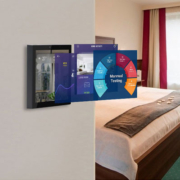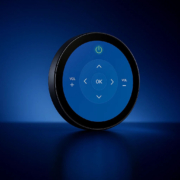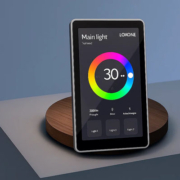Smart Home Automation Explained: Features, Devices, and Key Benefits
In the age of connected technology, the concept of a “smart home” has evolved from science fiction to a mainstream reality. Whether it’s voice-controlled lighting, automated security systems, or intelligent climate control, smart homes are transforming the way we live. But what exactly is a smart home, and why are so many homeowners adopting this technology? This guide will walk you through the definition, features, and key benefits of smart home living.
What Is a Smart Home?
A smart home is a residence equipped with internet-connected devices that can be remotely monitored, managed, and controlled. These devices, often connected through a central smart home control panel, mobile app, or voice assistant (like Amazon Alexa or Google Assistant), allow homeowners to automate and optimize various functions such as lighting, heating, appliances, entertainment, and security.
Smart homes rely on technologies like:
- Wi-Fi and Zigbee/Z-Wave for communication between devices
- IoT (Internet of Things) platforms like Tuya, HomeKit, or SmartThings
- Sensors, actuators, and smart controllers to automate responses and behaviors
Key Components of a Smart Home
- Smart Home Control Panel: Central interface for controlling connected devices, often wall-mounted or integrated with mobile apps.
- Smart Lighting: Automated lights that adjust brightness, color, and schedule.
- Smart Thermostats: Learn your preferences and optimize heating/cooling for energy savings.
- Security Systems: Include smart locks, cameras, door sensors, and alarms.
- Voice Assistants: Enable hands-free control through voice commands.
- Connected Appliances: Smart refrigerators, washing machines, and ovens with remote operation capabilities.
Benefits of a Smart Home
1. Convenience & Automation
Smart homes reduce the need for manual control. Imagine lights turning off when you leave the room or your coffee maker starting at 7 AM automatically—smart systems handle repetitive tasks for you.
2. Energy Efficiency
Smart thermostats, lights, and appliances can be scheduled or triggered to operate only when needed, significantly cutting down on unnecessary energy use and utility bills.
3. Enhanced Security
From live camera feeds to remote door locking, smart homes offer real-time control over your home’s security. You’ll receive alerts if anything unusual happens, whether you’re at home or away.
4. Remote Monitoring & Control
Using your smartphone or smart home control panel, you can check and control devices even when you’re not home—adjust your thermostat, unlock the door for guests, or check who’s at the door.
5. Increased Property Value
Homes with integrated smart systems often attract more buyers and higher sale prices. It’s not just about modern appeal—it’s about future-ready infrastructure.
6. Customization and Personalization
Set routines based on your lifestyle. For example, a “Good Night” routine might dim lights, lock doors, and turn on your alarm system with a single voice command or tap.
Is It Expensive to Build a Smart Home?
The cost depends on your needs. You can start small—with just smart bulbs or a Wi-Fi plug—and gradually build up to a fully integrated system. Modular, scalable solutions like the Portworld smart home control panel allow you to expand easily without needing to replace existing devices.
Portworld: Powering Your Smart Home Journey
If you’re looking for a powerful, customizable, and cost-effective smart control solution, Portworld offers advanced smart home control panels with:
- 4-inch and 5-inch Android-based touch panels
- Zigbee, Wi-Fi, and PoE options
- Support for Tuya, MQTT, and other IoT platforms
- OEM/ODM customization for homes and businesses
Whether you’re a homeowner or developer, Portworld provides the tools to create a truly intelligent living experience.










